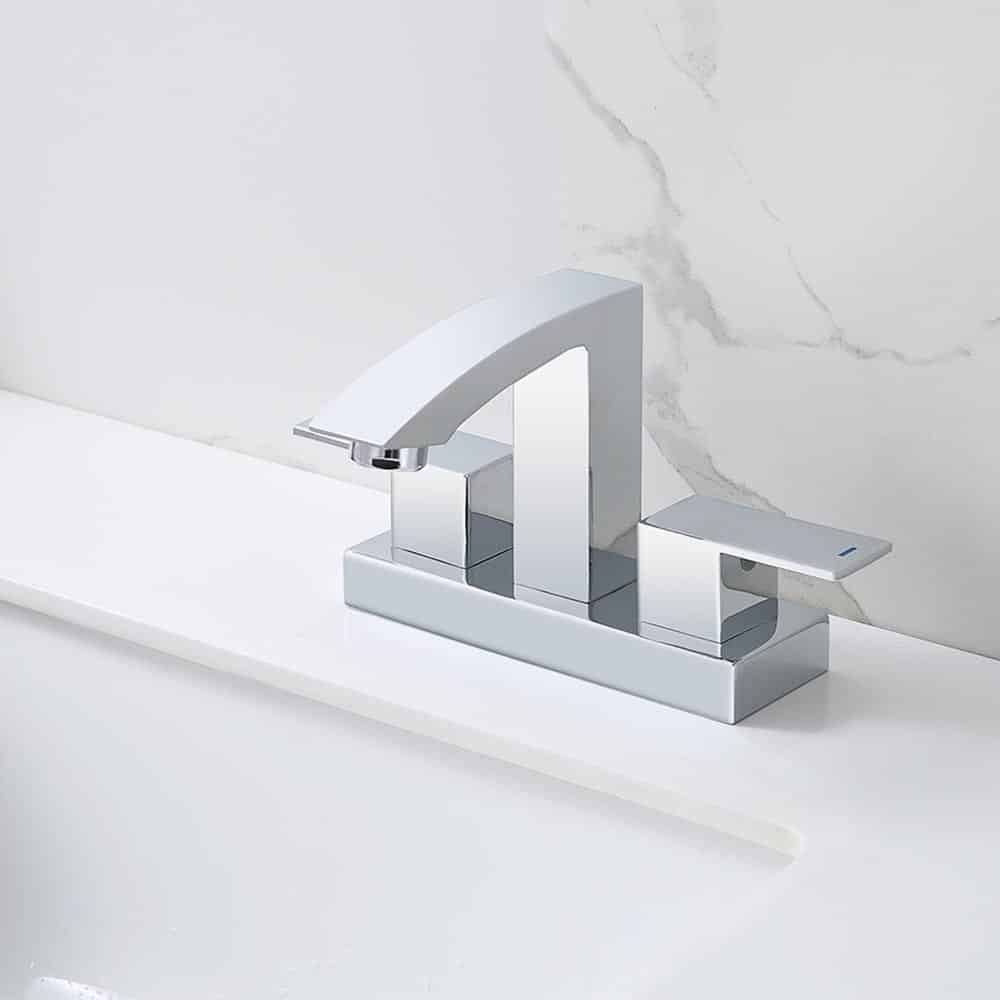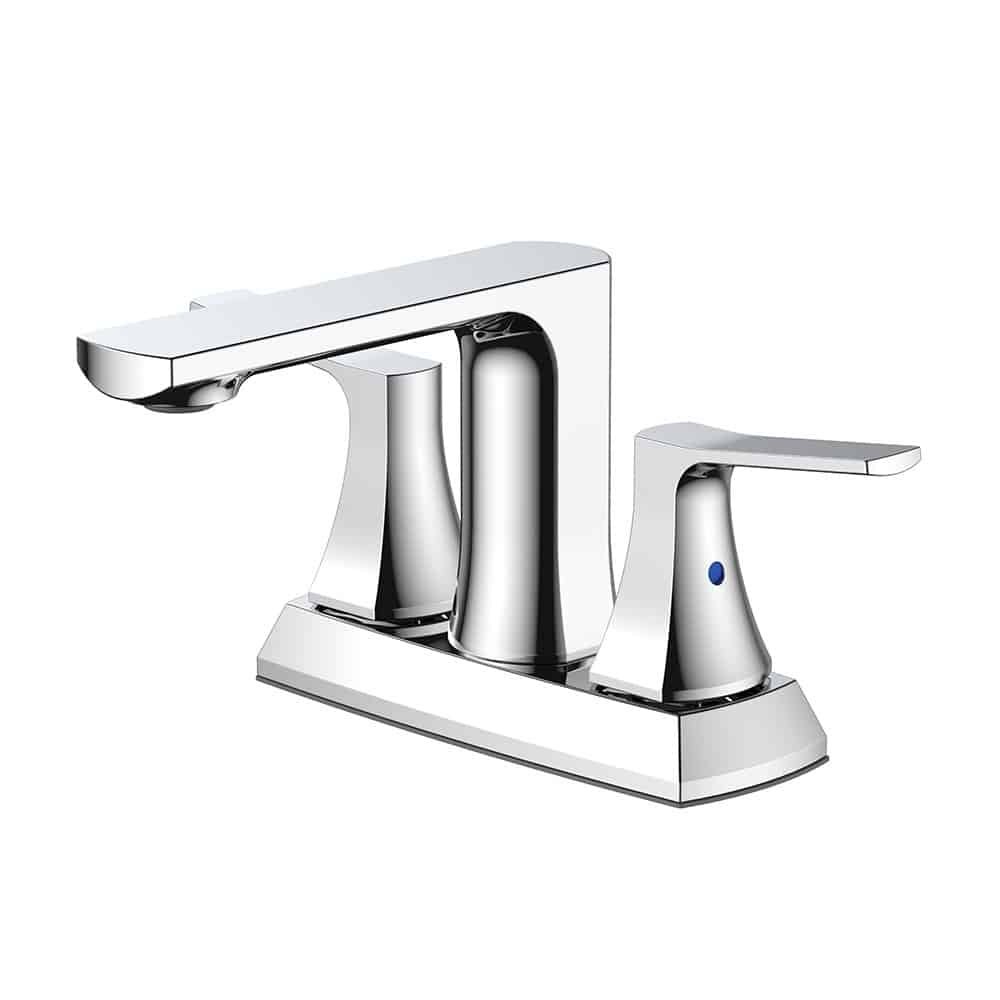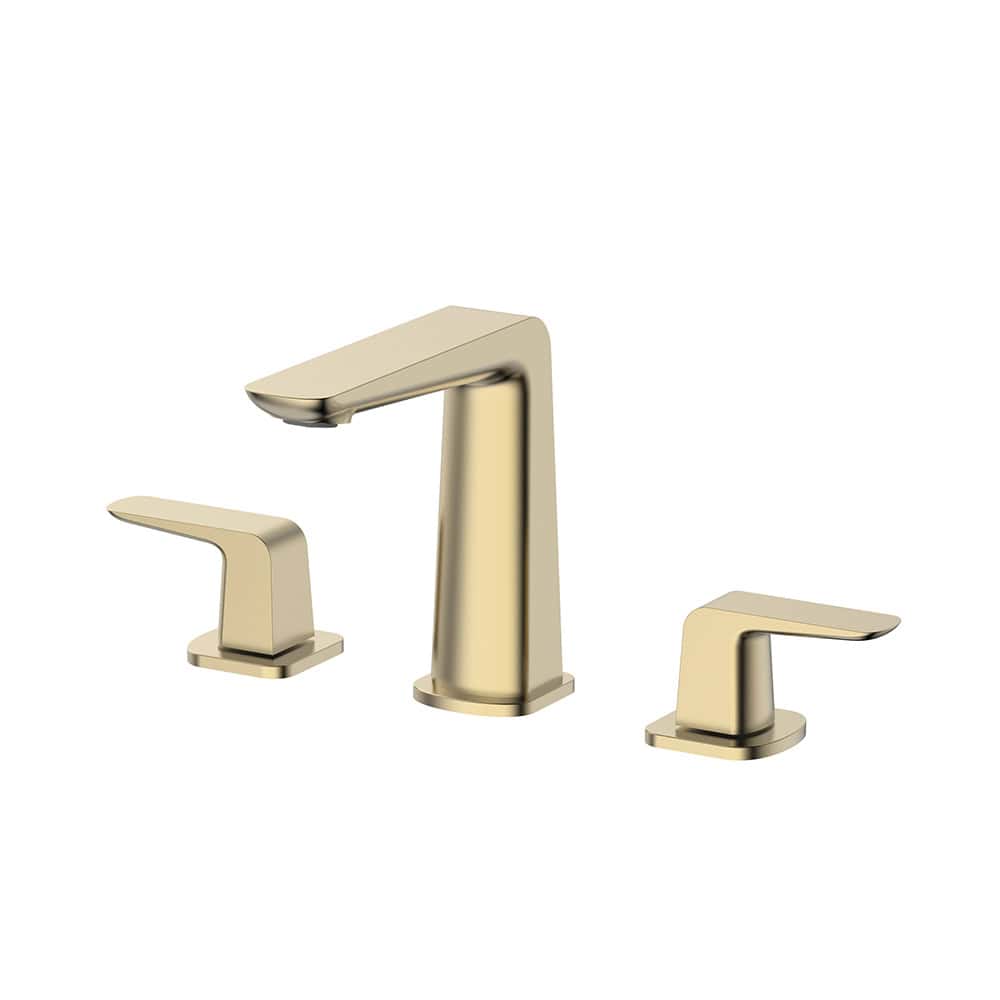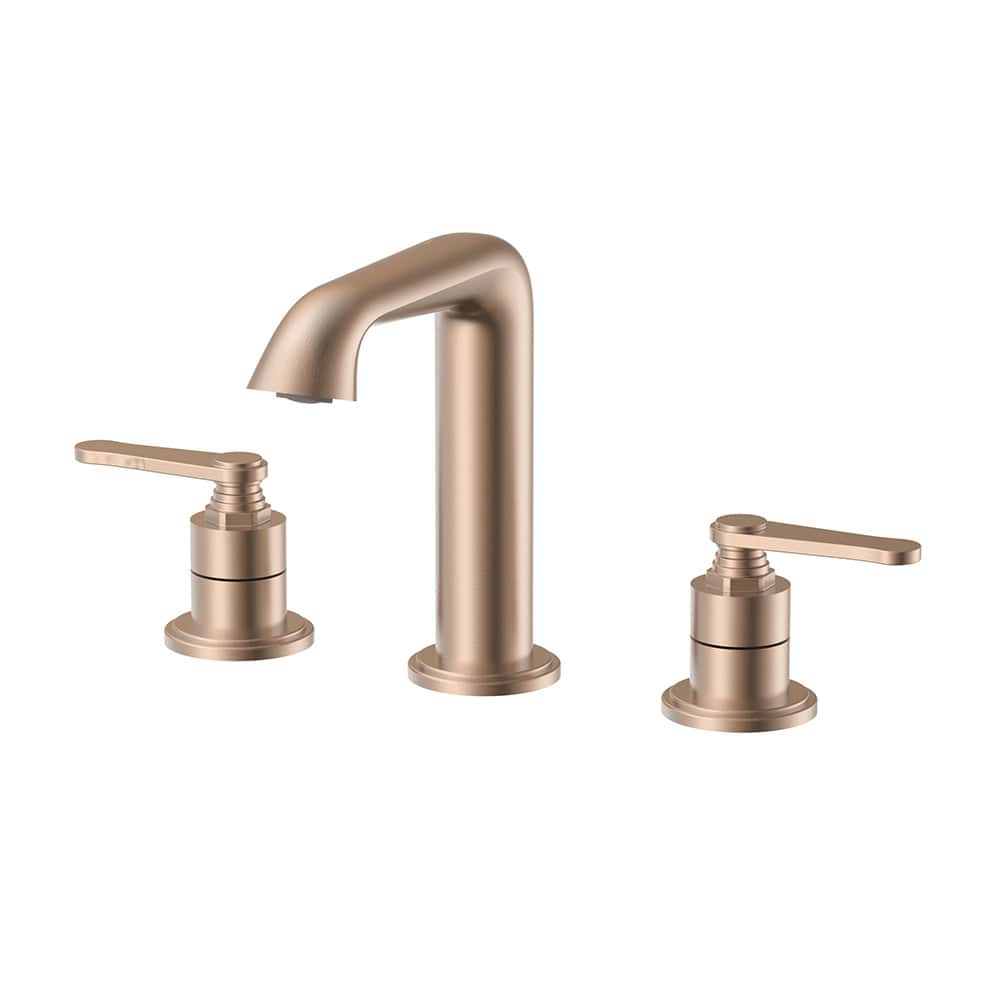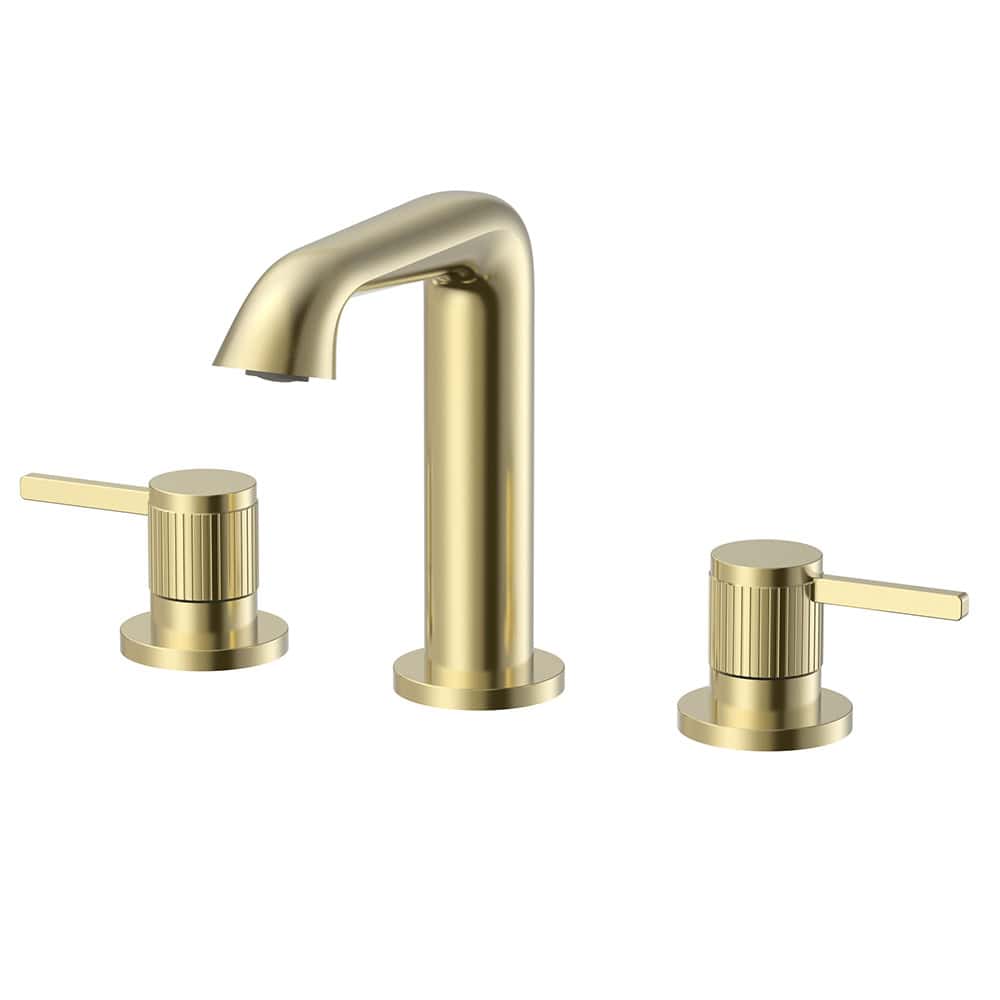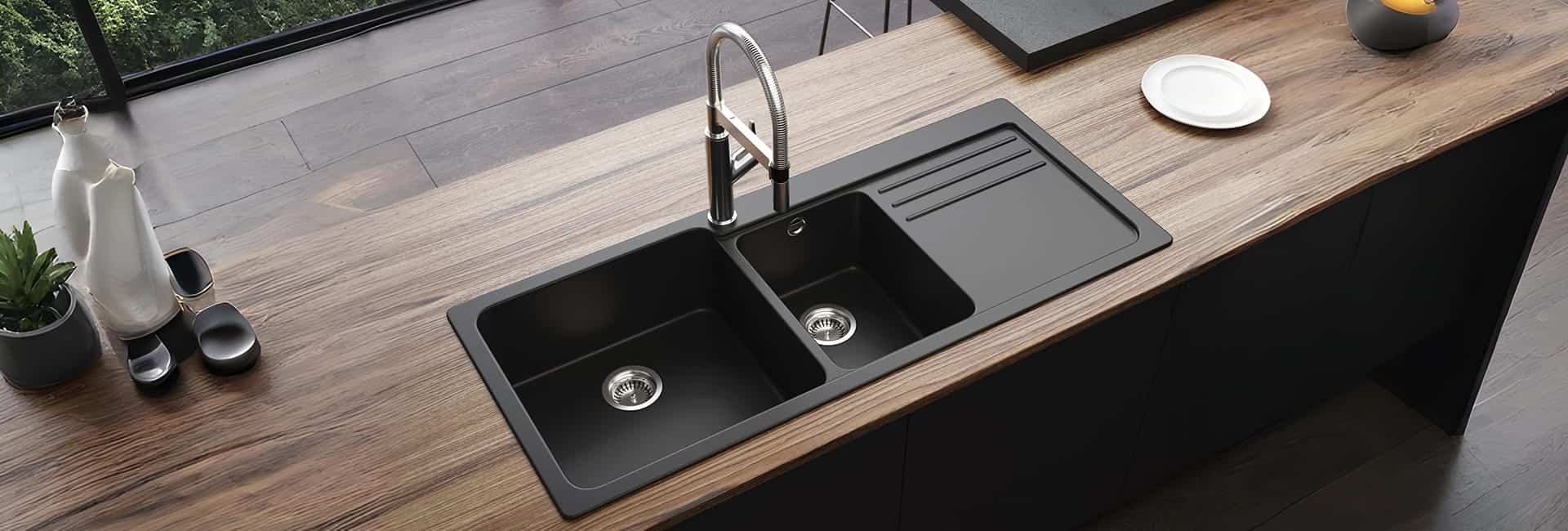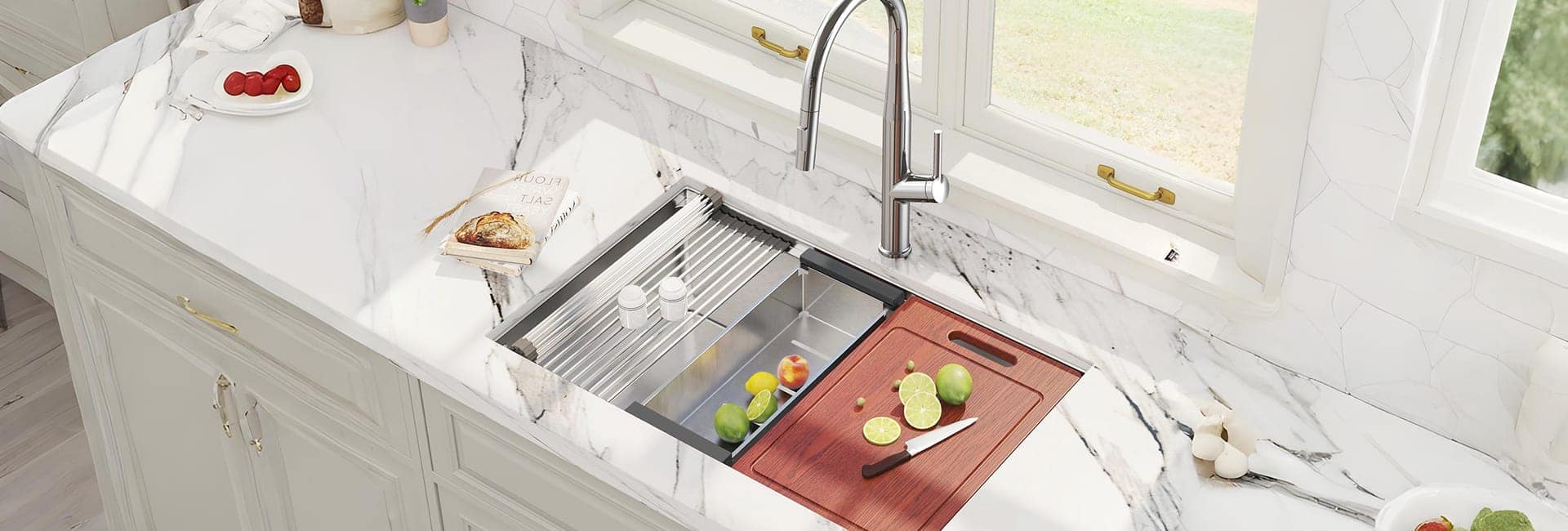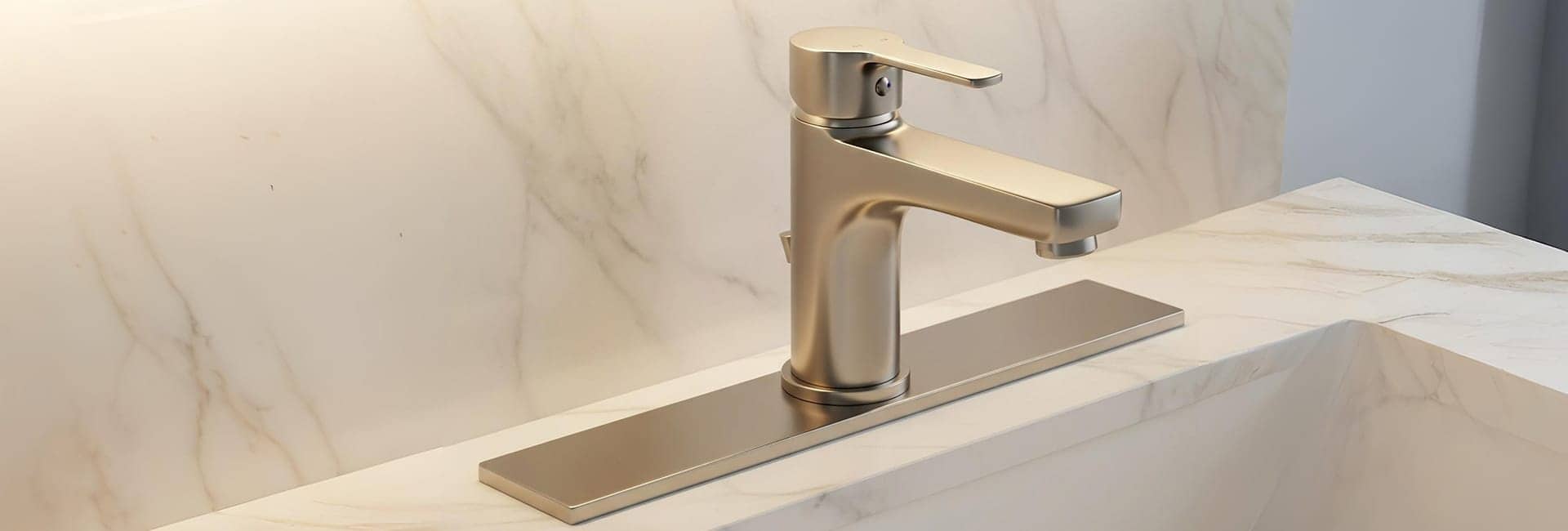You’re in the middle of a bathroom renovation—or planning one—and you’ve hit a wall. A wall of faucets. Terms like Centerset vs Widespread Faucets sound simple, but the price gaps, style options, and conflicting advice make it overwhelming. You start worrying about making a costly mistake.
You just need a clear, honest breakdown of what really matters for quality, budget, and fit. That’s what I’ll give you. I’ll cut through the jargon, focus on what counts long term, and by the end, you’ll know exactly which faucet is right for your bathroom.
Centerset vs Widespread Faucets: The Real Difference
Let’s start with the fundamentals. The names “centerset” and “widespread” are all about the spacing of the holes drilled into your sink or countertop.
Widespread Faucets
These are made of three separate pieces: a spout and two individual handles (one for hot, one for cold). This gives you more flexibility, as the distance between the handles can typically be adjusted from 8 to 16 inches. This setup is often found on larger vanities and is seen as a more customizable, high-end option.
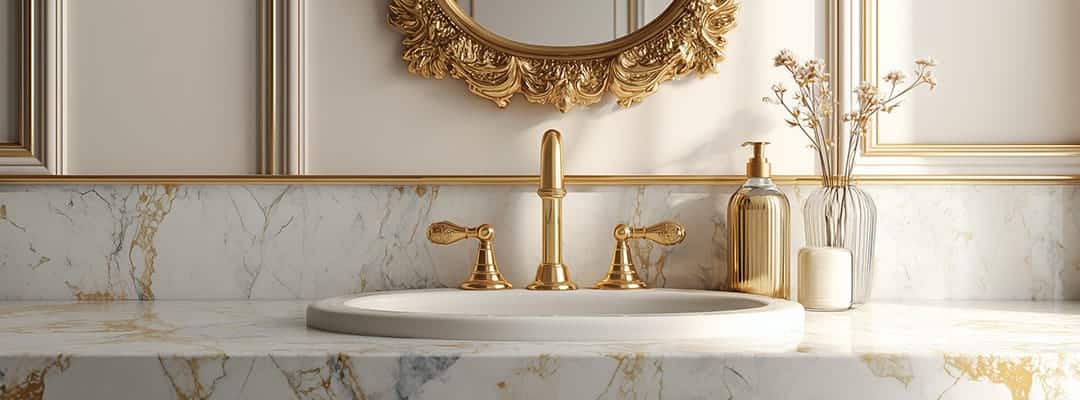
To make things even clearer, here’s a side-by-side look at the key differences.
| Feature | Centerset Faucet | Widespread Faucet |
|---|---|---|
| Configuration | Spout and handles on one 4-inch base | Three separate pieces with 8-16 inch spacing |
| Typical Cost | More budget-friendly | Higher initial cost |
| Installation | Easier, often DIY-friendly | More complex, may need a professional |
| Best For | Smaller sinks, powder rooms, budget renos | Larger vanities, master bathrooms, custom looks |
| Cleaning | Can be tricky to clean around the base | Easier to clean due to space between parts |
| Repairability | A major issue often requires replacing the whole unit | Easier to repair; individual parts can be replaced |
| Style Options | Good variety, but less customizable | Huge range of styles and high-end designs |
What Really Determines Quality
Here’s a secret the home improvement world doesn’t shout from the rooftops: the most important factor in your faucet’s longevity isn’t whether it’s centerset or widespread. It’s what it’s made of.
Materials Matter Most
- Solid Brass: This is the gold standard for faucet bodies. It’s incredibly durable, resists corrosion, and stands up to hard water. A heavy faucet is often a good sign it’s made of solid brass. Look for an NSF 61/9 stamp on the box, which certifies it meets lead-free standards.
- Stainless Steel: Another fantastic, durable choice. It’s naturally lead-free and resists rust and stains.
- Zinc & Zinc Alloys: These are common in more budget-friendly faucets. While they get the job done, they are less durable and more prone to corrosion over time than brass or steel.
The Heart of the Faucet: Valve Technology
Inside every faucet is a valve that controls the water flow. You want one with ceramic disc valves. Unlike older ball or compression valves, ceramic discs are extremely hard and durable, creating a near-perfect, drip-free seal that lasts for years.
A Guide to Durable Finishes
The finish doesn’t just determine the look; it’s also the faucet’s first line of defense.
- Chrome: A classic for a reason. It’s durable, affordable, and easy to clean.
- Brushed or Satin Nickel: Excellent at hiding fingerprints and water spots, making it a low-maintenance favorite.
- Matte Black: A trendy, modern choice that can make a bold statement. Just be aware that light-colored mineral deposits from hard water can be more visible on it.
- PVD (Physical Vapor Deposition) Finishes: Some brands offer special finishes (like Delta’s Brilliance or Moen’s LifeShine) that use a PVD process. These are exceptionally durable and resistant to scratches and tarnishing.
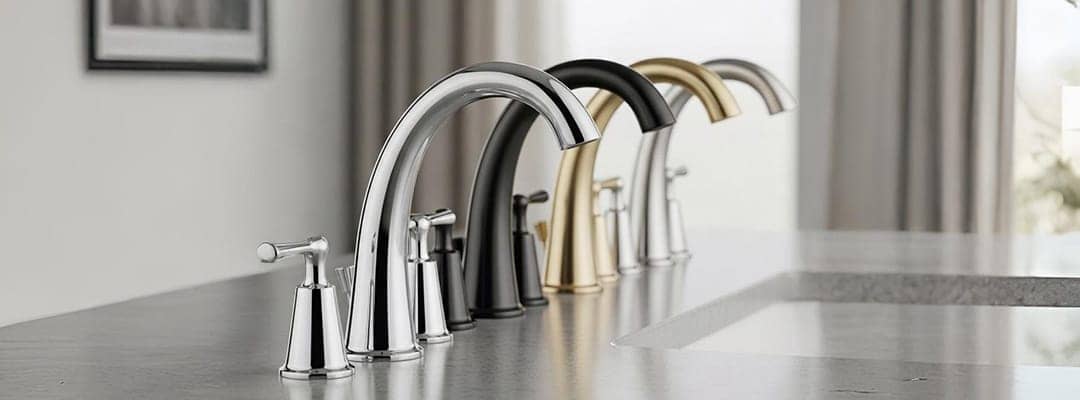
A quick tip for hard water: If you struggle with mineral buildup, a Satin Nickel finish is fantastic at camouflaging those pesky spots between cleanings.
Your Biggest Dilemmas and Their Solutions
I’ve heard from many people who get stuck on the same questions when they face this choice. Here are the common dilemmas and the insights that can help you move past them.
Dilemma #1: “Can I install this myself, or do I need to call a pro?”
This is the most common concern for DIY homeowners. The installation process is where the biggest difference between these two faucet types becomes clear.
- Centerset Faucets: Think of this as a single-piece puzzle. Because the handles and spout are already connected, you simply feed the entire unit through the holes and secure it from below. It’s a fast, simple process that a confident DIYer can complete in a short amount of time.
- Widespread Faucets: I have to be honest: this is a more complex job. You have three separate components—the spout and two handles—that you must install individually. This means you have to carefully connect each piece to the water lines with hoses, which requires more time and can be tricky in the tight space under your sink. For this reason, many homeowners prefer to have a professional handle the installation of a widespread faucet.
Dilemma #2: “The centerset is so much cheaper. Am I making a mistake?”
You might see a significant price difference and wonder if you’re sacrificing quality for a lower cost. Here’s how to think about the long-term investment.
- Centerset Faucets: The low initial cost is a major benefit. However, because the handles and spout are a single unit, if one part breaks, you may have to replace the entire faucet. This could mean a more frequent replacement cycle over the years.
- Widespread Faucets: The upfront cost is higher, with some widespread faucets starting around $40. But here’s the key benefit: if one handle or the spout develops a problem, you can often buy and replace just that single piece, which is usually cheaper and faster than a full replacement. It’s a bigger investment initially but can save you money and headaches down the road.
Dilemma #3: “Is one of these harder to keep clean?”
You want your bathroom to look good every day, and a clean faucet is a big part of that. Both types have a pro and con when it comes to maintenance.
- Centerset Faucets: Because it’s a single piece, you have fewer individual parts to wipe down. However, the tight, crowded space where the spout meets the handles can collect grime, water spots, and mildew, which can be difficult to reach and clean thoroughly.
- Widespread Faucets: I find that widespread faucets are a dream to clean because you have plenty of open counter space between each component. You can easily wipe around the base of the handles and spout, ensuring no dirt or water spots are left behind.
Modern Features You Shouldn’t Overlook
Beyond the basic configuration, two modern standards are worth looking for, no matter which style you choose.
Designing for Everyone: ADA Compliance
You might see faucets labeled “ADA Compliant.” This isn’t just a requirement for public spaces; it’s a sign of user-friendly design that benefits everyone. An ADA-compliant faucet:
- Can be turned on with one hand.
- Requires less than 5 pounds of force to operate.
- Doesn’t require tight gripping, pinching, or twisting of the wrist.
This makes them perfect for households with children, elderly family members, or anyone with arthritis. Lever-style handles are almost always a better choice than round knobs for this reason. For more information, you can check out the official».
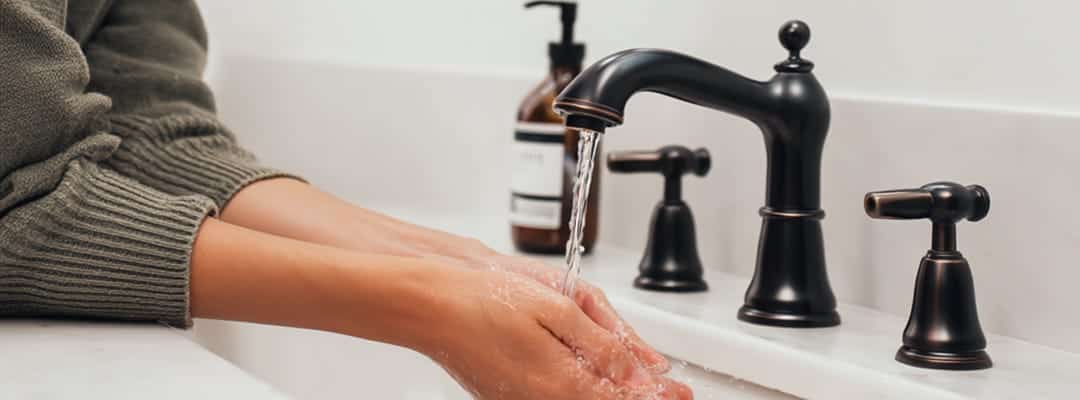
Saving Water and Money with WaterSense
Look for the Watersense» label. This is a certification from the U.S. Environmental Protection Agency that guarantees the faucet is water-efficient without sacrificing performance.
- A WaterSense-labeled faucet uses a maximum of 1.5 gallons per minute (GPM), compared to the standard 2.2 GPM.
- This can reduce your sink’s water use by 30% or more, saving the average family about 700 gallons of water per year.
- It also saves energy by reducing the demand on your water heater.
Long-Term Ownership: Maintenance is Key
No matter which faucet you choose, taking care of it will ensure it lasts for years. I have found that a little maintenance goes a long way.
- Check for Leaks: You should regularly inspect your faucet for any drips or leaks. A small leak can waste a lot of water and can indicate that a seal or washer needs to be replaced. These parts are inexpensive and easy to fix.
- Clean the Aerator: If you notice a drop in water pressure, I suggest you clean the aerator. Mineral deposits from hard water can clog it up. Simply unscrew it, soak it in vinegar, and scrub it gently with a brush.
- Lubricate Moving Parts: If your handles feel stiff, you can use a silicone-based plumber’s grease to lubricate the moving parts inside them. This will help them operate smoothly and prevent premature wear.
For more information on general plumbing tips and maintenance, I would recommend checking out professional plumbing association websites.
Making the Right Choice for Your Bathroom
So, after all that, which one should you choose? It really comes down to your specific situation.
- I would recommend choosing a Centerset Faucet if:
- You have a small sink or are outfitting a powder room where space is tight.
- You’re working with a strict budget and need a cost-effective option.
- You plan on installing the faucet yourself and want a straightforward project.
- I would recommend choosing a Widespread Faucet if:
- You have a larger vanity and want the faucet to be a design focal point.
- You prioritize easy cleaning and long-term repairability.
- You want a high-end, customizable look with more flexibility in style and placement.
My advice? Don’t stress over the centerset vs. widespread label. Set your budget, check your sink configuration, and choose the best faucet you can afford—solid brass, durable finish, ceramic disc valves. That’s the key to a faucet you’ll love for years.
FAQs
About Luxuryhome
Luxuryhome is not just a faucet manufacturer or wholesaler, but more like a partner who can provide you with more added value.
We are united in our determination to produce China-made bath and kitchen fixtures adhering to the highest ethical principles. You have our promise!
More post you may interested in


